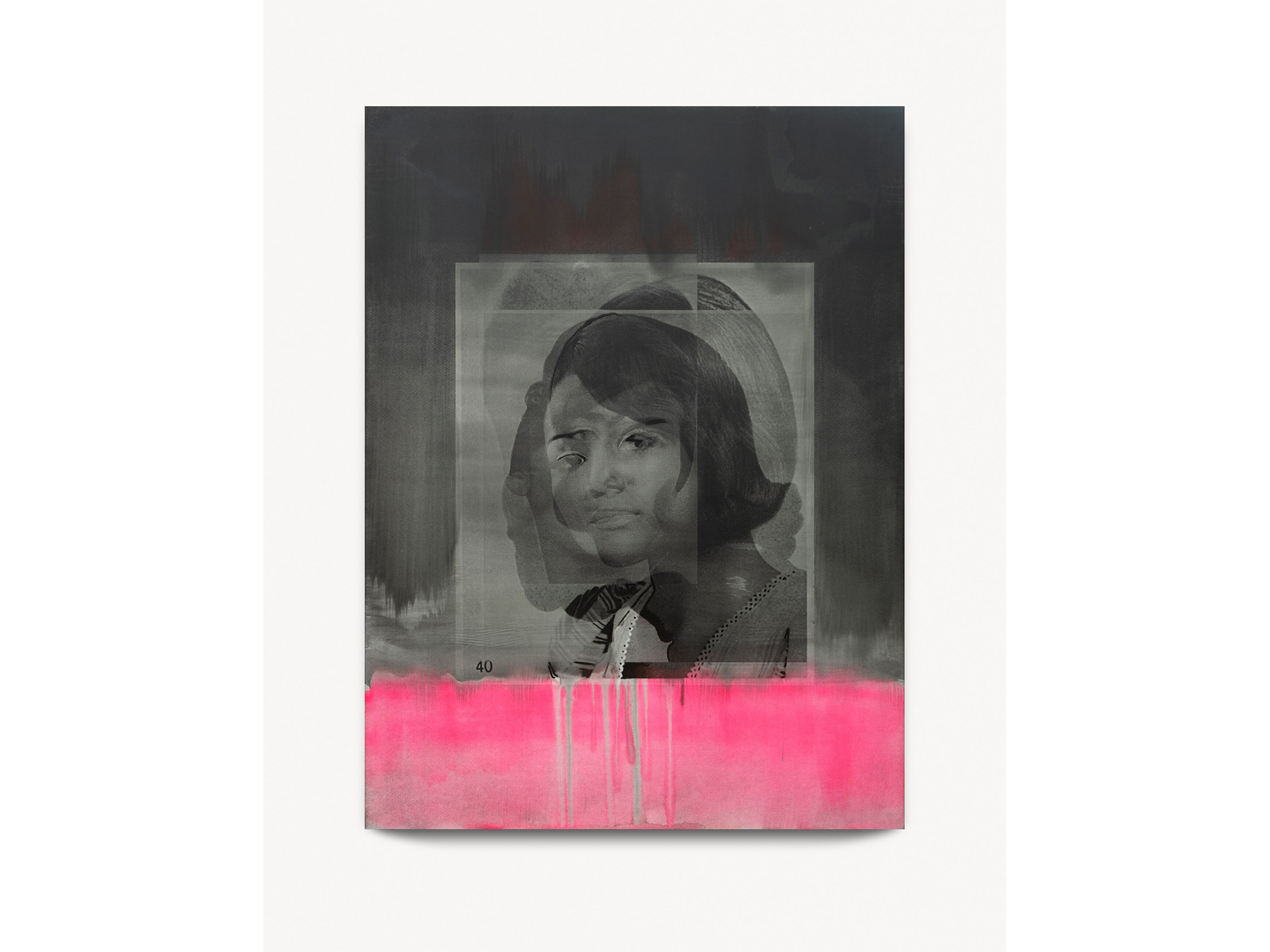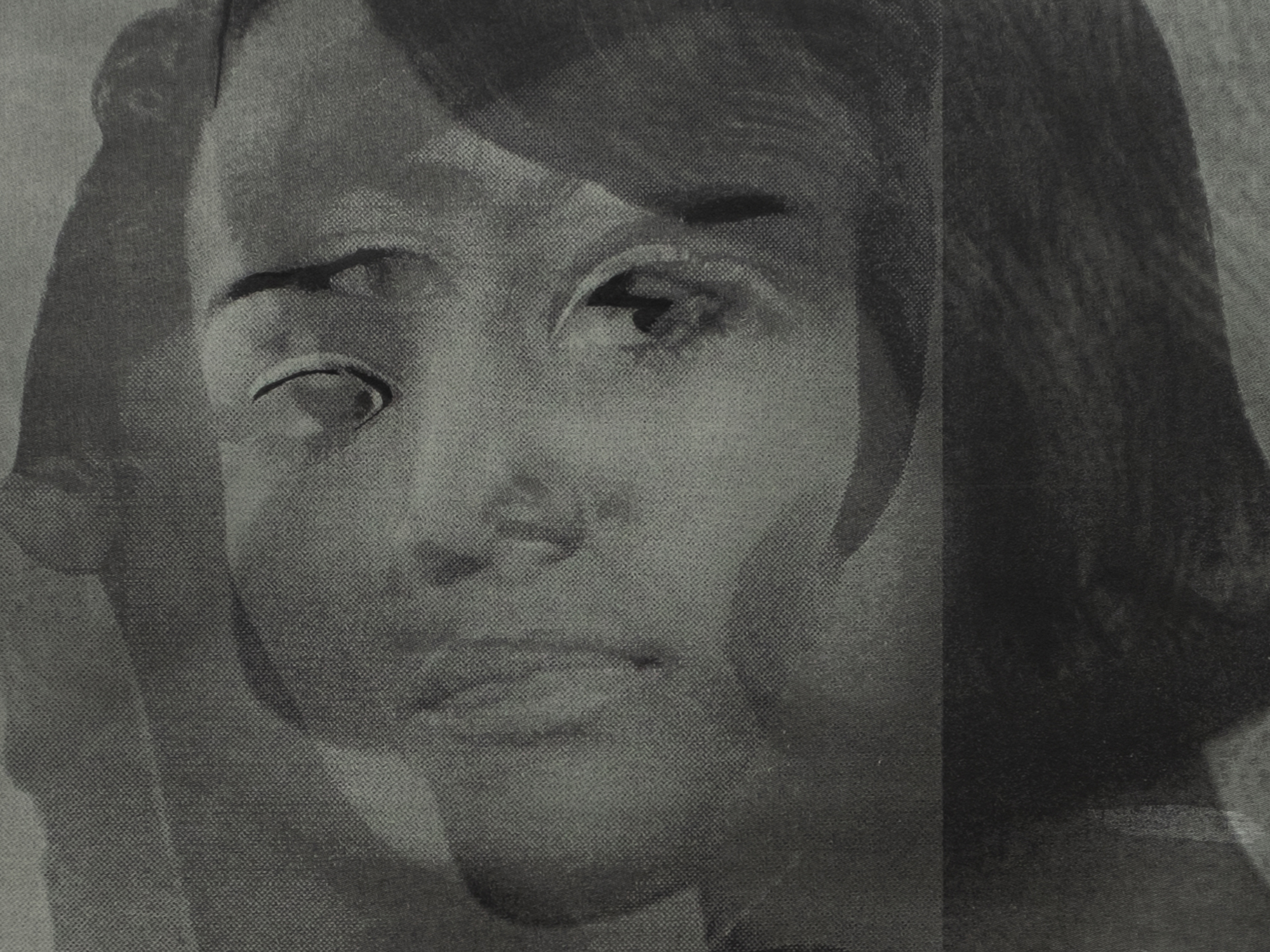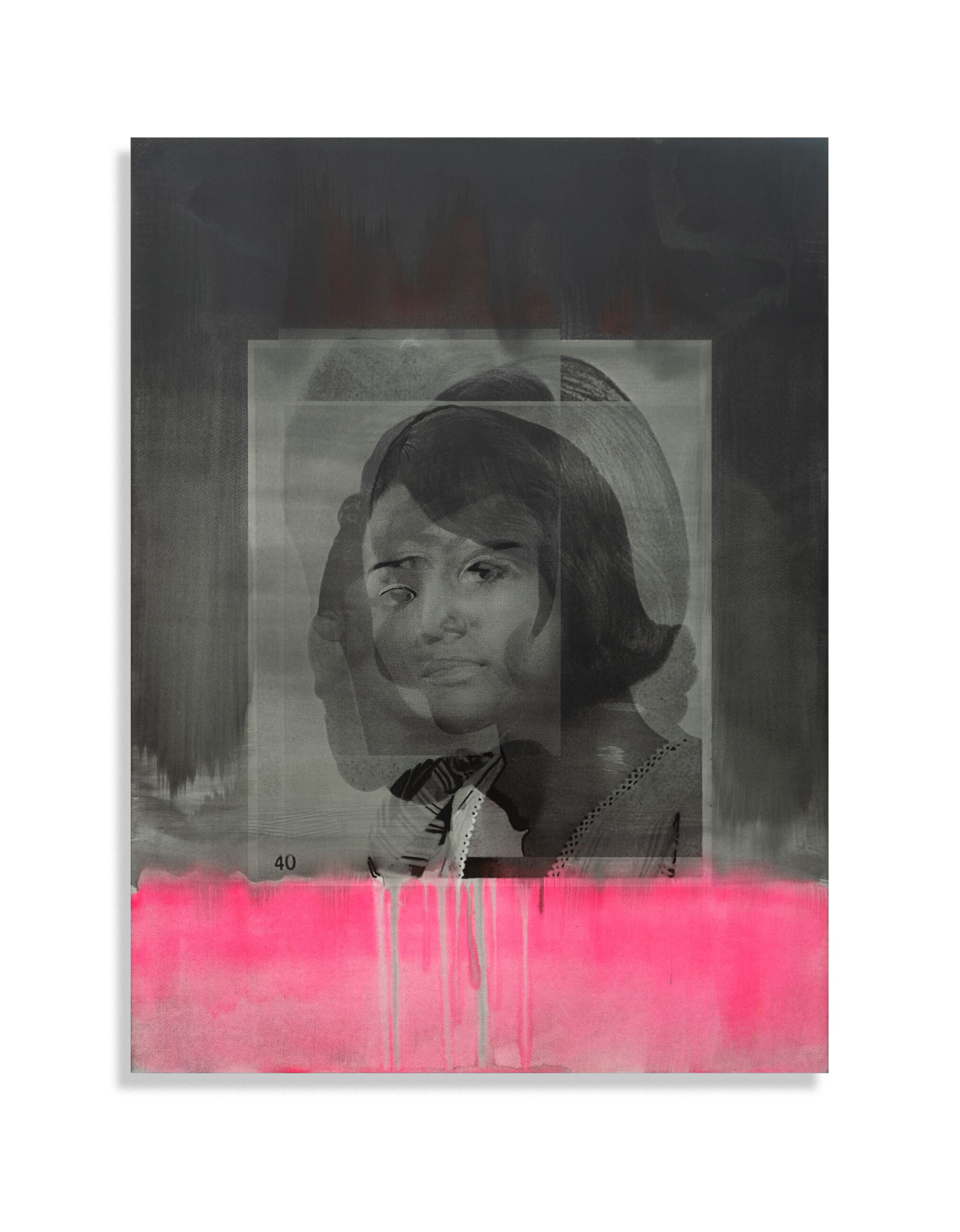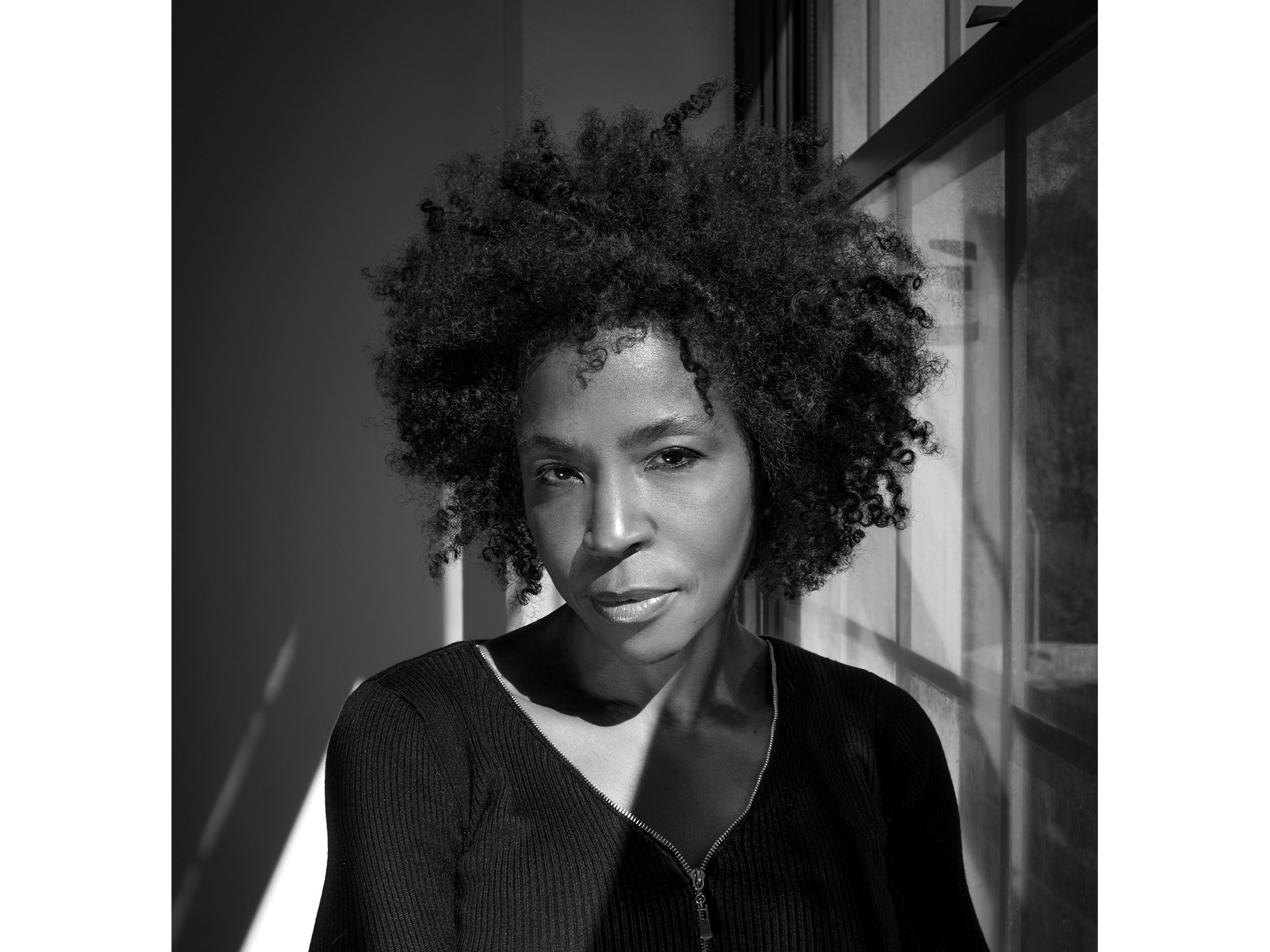Lorna Simpson
For Nor
For Nor
$400,000
2022
Ink and screenprint on gessoed fiberglass
170.2 x 127 x 3.5 cm / 67 x 50 x 1 ⅜ in

Lorna Simpson came to prominence in the 1980s with her pioneering approach to conceptual photography that raised questions about the nature of representation, identity, gender, race and history that continue to drive the artist’s expanding and multi-disciplinary practice today. ‘For Nor’ (2022) belongs to Simpson’s more recent Special Character series. In these works, silkscreened images of isolated figures emerge from layered washes of paint, highlighting Simpson’s continual investigation of the relationship between parts and wholes and the nature of representation.
In ‘For Nor,’ several women’s faces drawn from advertisements found in the pages of Jet and Ebony magazines emerge from an inky, charcoal-colored background. Framed within a smaller rectangle on the canvas, the layered fragments of the figures seem to morph, fuse and shift before the viewer’s eyes, settling into a composite female face whose direct gaze meets the audience. A strip of bright, fluorescent pink paint sits beneath the layered portrait. Irregular drips of gray pigment trickle from beneath the faces, streaking the pink.

‘The notion of fragmentation, especially of the body, is prevalent in our culture… We’re fragmented not only in terms of how society regulates our bodies but in the way we think about ourselves’—Lorna Simpson [1]

By superimposing the women’s faces, ‘For Nor’ reveals the reinforcement of stereotypes in the consumption of everyday imagery. The strikingly uncanny gaze of the blended portraits exudes a power in looking, in representation, and in visibility. Simultaneously present and partially obscured, the duality of these spliced personas also implies an interruption between their physical appearance and their inner psyche—refracted and amplified by the additional external layer of the audience’s own contemplation.
‘For Nor’ demonstrates Simpson’s mastery of paint and the evolution of her exploratory practice. As noted by Joan Simon, the author of a celebrated monograph on Simpson’s work, ‘Simpson’s search for different images and different mediums, for different ways of addressing the body—even through its absence—is a through line from the outset of her career.’ [2] Simpson’s new work continues to immerse viewers in the characteristic paradoxes of her praxis, weaving dichotomies of figuration and abstraction, past and present, destruction and creation into the fabric of her oeuvre—a potent response to contemporary American life.

‘I’m trying to question the viewer’s engagement with portraiture. When they experience a representation of a particular individual, what information do they think they’re getting?’—Lorna Simpson [3]




 Born in Brooklyn, Lorna Simpson came to prominence in the 1980s with her pioneering approach to conceptual photography. Simpson’s early work—particularly her striking juxtapositions of text and staged images—raised questions about the nature of representation, identity, gender, race and history that continue to drive the artist’s expanding and multi-disciplinary practice today. She deftly explores the medium’s umbilical relation to memory and history, both central themes within her work.
Born in Brooklyn, Lorna Simpson came to prominence in the 1980s with her pioneering approach to conceptual photography. Simpson’s early work—particularly her striking juxtapositions of text and staged images—raised questions about the nature of representation, identity, gender, race and history that continue to drive the artist’s expanding and multi-disciplinary practice today. She deftly explores the medium’s umbilical relation to memory and history, both central themes within her work.